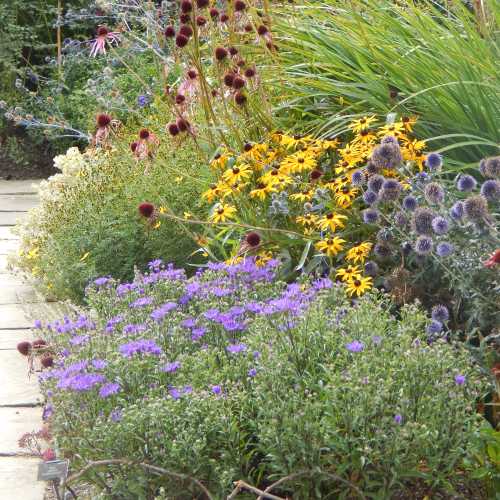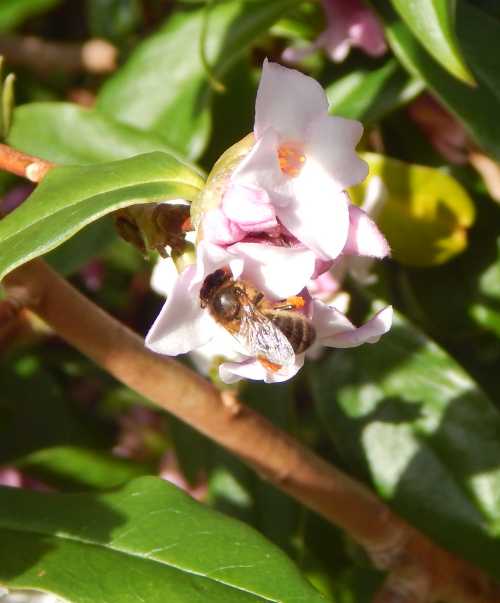Are Native Plants Better For Bees?
Each year, I receive one or two messages regarding the use of
native plants and shrubs in gardens as a means to help bees and pollinators.
Sometimes, the writer of the message is considering the removal of a non-native, already bee-friendly shrub or plant in favour of a native replacement. On other occasions, a whole garden is in the process of being designed.
But the question is, within the context of gardens, are native plants and shrubs better for bees and pollinators?
The answer may not be so simple!
Native Garden Plants vs Non-native Garden Plants For Bees
In order to answer this question, I have decided to make a number of points the reader can take into account, since recommendations can differ according to local environment.
But firstly, a little background….
Non-native And Invasive Are Not The Same Thing
Non-native plants and shrubs are not necessarily ‘invasive’. Indeed, the Natural History Museum in London comment that many non-native plants can “thrive in new areas and pose no threat to others”.
So what is an invasive species? The Natural History Museum provides the following definition1:
"Invasive species are species outside their normal ranges that have a negative impact on other organisms or environments.
They tend to have escaped controlling species (which might be predators, herbivores or parasites) in their normal ranges, which would have otherwise limited their survival, and they are often well suited to their new environment."
They further state:
"Invasive species can do all sorts of damage to an existing ecosystem, including changing habitats and starving native animals of food and resources."
Note that ‘vigorous growth’ does not necessarily mean ‘invasive’.
In fact, deciduous plants and shrubs die back in the autumn/winter, and tend to grow back vigorously the following year, only to die back again at the end of the season.
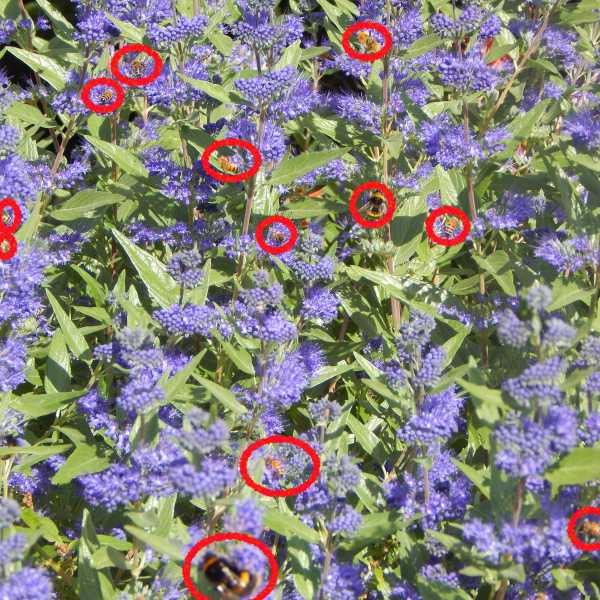 Caryopteris x clandonensis is a deciduous shrub which originates in Asia.
It is found in garden borders in Europe and America.
This fabulous shrub attracts many pollinators!
Caryopteris x clandonensis is a deciduous shrub which originates in Asia.
It is found in garden borders in Europe and America.
This fabulous shrub attracts many pollinators!
Other plants and shrubs may exhibit strong growth year after
year, but can be cut back substantially.
Some non-native plant species may spread easily via seed dispersal, and yet they do not cause a problem for wildlife, and in any event, can easily be removed.
However, within the context of plants and shrubs, truly invasive species can change environments by altering soil pH, crowding out other plants, and thereby removing a food resource or habitat for the creatures that depended upon it.
Invasive plants may accelerate the damage by spreading rapidly because of the lack of attacking parasite or herbivore, and may be aided by the method of spreading via self-seeding or root growth, for example.
Non-native Plants And Shrubs In Gardens - Points To Consider
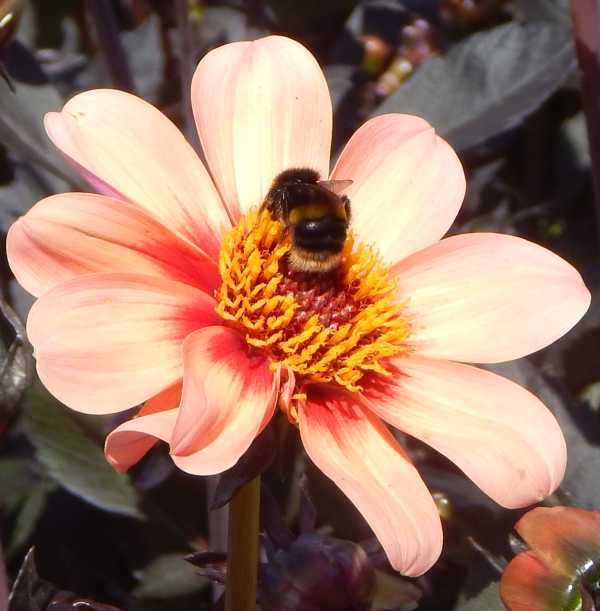 Dahlias originate in Mexico. They are popular with gardeners and bees alike!
Dahlias originate in Mexico. They are popular with gardeners and bees alike!1. Urban Gardens
Bees can benefit from non-native plant and shrub species in urban gardens.
Given the trend toward loss of floral resources for bees and pollinators (not only in the countryside, but also in gardens due to paving and gravelling over, and replacement of traditional boundary hedges with wooden fencing), it is vital we gardeners make an effort to compensate by providing the best resources we can. (See - reasons for bee decline).
Many non-native plants and shrubs provide excellent sources of nectar and pollen for bees, and sometimes offer better food resources than native plants.
Even within brownfield sites, Falk2 states:
“Much of the flora of brownfield sites consists of alien plants rather than natives, yet bees can abound and often do better than in equivalent semi-natural situations.”
Falk also notes that the longest modern list of bee species from a single site anywhere in Britain (133 species) was recorded in a garden in Surrey, England. The garden is not a rugged wildlife garden as such, but consists of formal flower beds.
My own experiment years ago, in which I attempted to convert the whole of my back garden into a native wildflower area, brought disappointing results as far as attracting pollinators was concerned.
Wildflowers can certainly be very beneficial for pollinators, but in our scenario, we receive far more visits from a range of bee species since switching the garden to carefully planned flower borders and shrubs.
2. Environmentally Sensitive Areas
Environmentally sensitive sites can provide vital and rare habitat for threatened bee species (and other wildlife).
If you live in such an area, I would advise extreme caution when planning your garden.
Be careful of plants that self-seed or spread vigorously.
I recommend contacting the local body responsible for monitoring the site, and asking for their recommendations for your garden so that the local flora and fauna is preserved.
Years ago, I received an email from a lady who lived next door to an SSSI (Site Of Special Scientific Interest). She wished to place a colony of honey bees in a hive in her garden.
Because of the circumstances, I advised against this, and you can read more about this situation on my page: Is Becoming A Beekeeper Always The Best Way To Help Bees?
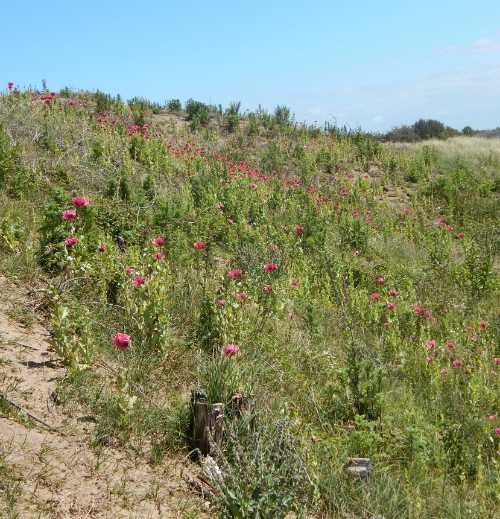 This photograph was taken in an environmentally protected area. It offers important habitat for a range of flora and fauna, as well as protected bee species.
This photograph was taken in an environmentally protected area. It offers important habitat for a range of flora and fauna, as well as protected bee species.3.
Keep Invasive Species Out Of The Garden
Wherever you live, it’s a good idea to avoid invasive species.
Since this website receives visitors from all over the world, I am unable to list all invasive plant and shrub species for each country.
To find out whether a plant or shrub is
invasive in nature in your particular area, I recommend consulting your relevant government body or
other monitoring organisation.
Final Thoughts On Non-native Plants And Shrubs In Bee Gardens
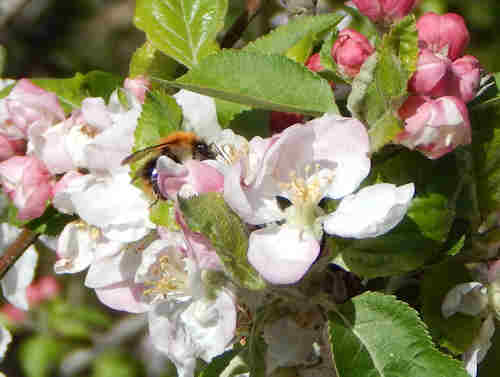 Common Carder Bumble Bee On Apple Blossom
Common Carder Bumble Bee On Apple Blossom
We humans eat many foods grown on plants that have been imported into our countries:
I could go on!
The point is, of course that we think nothing of growing these non-native crops in our gardens to feed ourselves, and our diets would be very dull indeed if we didn’t have access to an abundance of different foods. Perhaps we would be less healthy.
So in summary, if your garden conditions are appropriate, there is no reason not to consider adding non-native plant and shrub species to your garden if they provide ample nectar and pollen resources for bees.
FREE PDF DOWNLOAD:
Planning And Planting A Bee Friendly Garden
References
1. What are invasive species? - Katie Pavid, First published 1 July 2020, Natural History Museum.
2. Field Guide to Bees Of Great Britain And Ireland by Steven Falk, Bloomsbury 2015.
3. WHERE DO APPLES COME FROM? www.theorchardproject.org.uk
If you found this page helpful or interesting, I'd really be grateful if you would share it with others - if not this page, perhaps another, such as Gardening For Bees.
Thank you so much :) .
